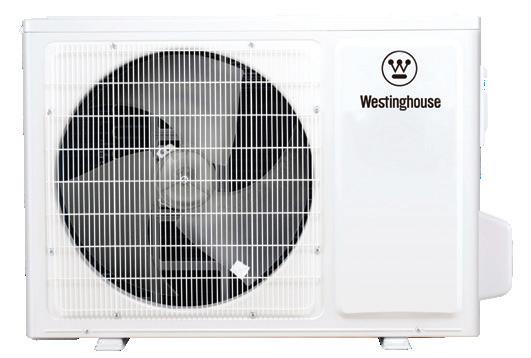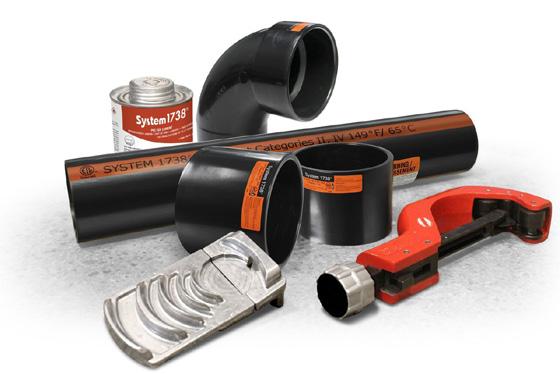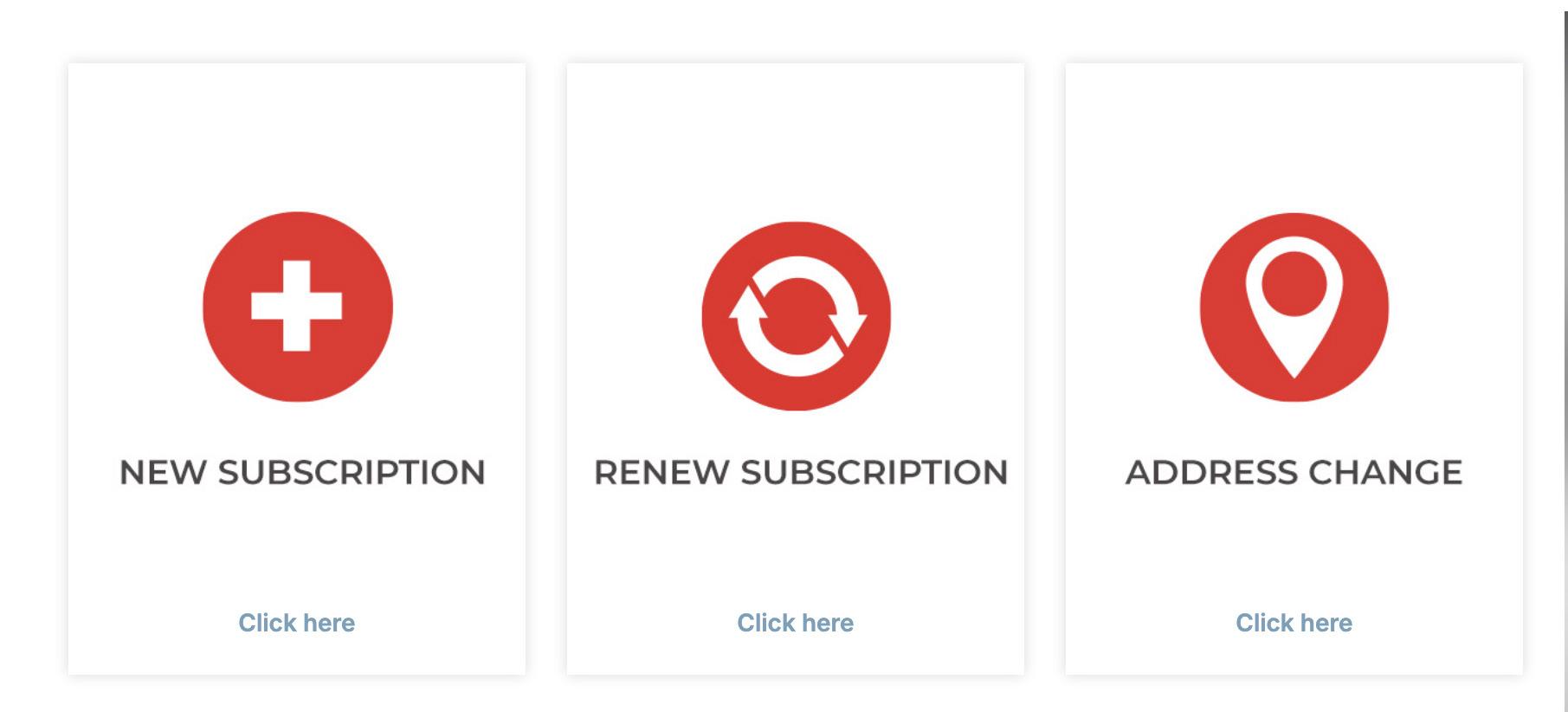









Our full line of single and multi-zone systems includes a wide variety of highly reliable, ductless mini split units and multi-position air handling units (MPAHUs). Each one is loaded with standard features and backed by exceptional service usually reserved for premier product lines.
With cutting edge inverter technology, our new MPAH system combines our revolutionary side discharge outdoor units with a modular design indoor unit. The result: high efficiency, space saving, quiet systems that allow for multiple installation options. Let Westinghouse take your business to a whole new level. For more information on how you can become a Westinghouse distributor, please contact Sales@WestinghouseAC-USA.com. www.WestinghouseAC-USA.com and Westinghouse are




Growth – The Numbers Don’t Lie Understanding your number adds reality to your growth plan.
Kalmbach
Use a Five-Year Growth Plan to Crack Your Home Service Company’s Market Ceiling Here are the critical decisions to drive service market growth. By
Kevin Hill
Why Your Team Shouldn’t Fear AI & How to Help Them Embrace It AI is the future, and now is the time to prepare.
By
Didi Azaria
Committing to a Stronger Marketing Plan in 2025 Marketing is the elixir that moves your HVACR company forward. Here’s how to create the plan. By Will
Merritt
Scott Brinkley
15 Create a Business Culture of Personal Responsibility, Growth Personal responsibility and growth start with you. Here’s a roadmap.
By Brittany Spencer
18 12 Most Common Financial Statement Mistakes to Fix Before You Sell – Part 5 It’s all about negative accounts payable and negative credit cards payable.
By Ruth King
19 Compliance with the Corporate Transparency Act (CTA) The deadline is approaching: key insights on understanding the CTA.
By Keven Prather
5 Publisher’s Page | Embracing Change: A New Year and A New Political Landscape It’s a time for change that can signal an opportunity for the future. Terry Tanker 4 MRS | Editor’s Choice: How Big Things Get Done
It’s tightening the bolts that complete even the largest project we learn in How Big Things Get Done. Here’s a lesson plan for all of us.





Some of us like the idea of pulling off a big or ambitious project even if that “big” only applies to our business restricted by size and location. How Big Things Get Done provides a marvelous overview of the bolts that put together those projects, from the gigantic to a “regular” business. This was one of The Economist’s Best Books in 2023.

The Surprising Factors That Determine the Fate of Every Project, from Home Renovations to Space Exploration and Everything in Between
By Bent Flyvbjerg and Dan Gardner
Understanding what distinguishes the triumphs from the failures has been the life’s work of Oxford professor Bent Flyvbjerg, dubbed “the world’s leading megaproject expert.” In How Big Things Get Done, he identifies the errors in judgment and decision-making that lead projects, both big and small, to fail, and the research-based principles that will make you succeed with yours.
www.amazon.com/How-Big-Things-Get-Done/dp/0593239512/

By Cal Newport
In Deep Work, author and professor Cal Newport flips the narrative on impact in a connected age. Instead of arguing distraction is bad, he instead celebrates the power of its opposite. Dividing this book into two parts, he first makes the case that in almost any profession, cultivating a deep work ethic will produce massive benefits. He then presents a rigorous training regimen, presented as a series of four “rules,” for transforming your mind and habits to support this skill.
www.amazon.com/Deep-Work-Cal-Newport-audiobook/dp/ B0189PVAWY

Hosted by James Wedmore
This podcast offers actionable advice and insights for small business owners looking to grow and succeed. All entrepreneurs want to know the secret to success. James Wedmore, a seven-figure online entrepreneur, believes success is created by mindset over strategy, magic over metrics and attitude over action.
www.mindyourbusinesspodcast.com
Musk
By Walter Isaacson
From the author of Steve Jobs and other bestselling biographies, this is the astonishingly intimate story of the most fascinating and controversial innovator of our era—a rule-breaking visionary who helped to lead the world into the era of electric vehicles, private space exploration, and artificial intelligence. Oh, and took over Twitter. Given that he might play a role in the new administration, it’s possible that he will have an impact on business in the U.S.

www.amazon.com/Audible-Elon-Musk/dp/B0BX4S57GM/
Hosted by Barbara Weltman
The brainchild of well-respected attorney, author and public speaker Barbara Weltman, Big Ideas for Small Business® offers an up-to-date inventory of information that can help you answer questions such as how to get legal assistance, how to navigate government regulations, what paperwork you need once you begin hiring employees, and more.

www.bigideasforsmallbusiness.com/big-ideas-for-small-business/

Hosted by Josh Muccio
Think of this as Shark Tank in podcast form. Entrepreneurs pitch their ideas to investors for a chance at investment, and it’s a great way to learn about business plans, scaling, and identifying customers.

www.thepitch.show

TERRY Tanker Publisher ttanker@hvacrbusiness.com
TOM Perić Editor in Chief tperic@hvacrbusiness.com
MEGAN LaSalla Art Director mlasalla@hvacrbusiness.com
BRUCE Sprague Circulation Manager bs200264@sbcglobal.net
BARBARA Kerr VP Operations bkerr@hvacrbusiness.com
TERRY Tanker Publisher Tel 440-731-8600 ttanker@hvacrbusiness.com
HVACR Business, founded January 1981, is a monthly national trade magazine serving contractors, mechanical engineers, manufacturers, manufacturer representatives, wholesalers, distributors, trade associations, and others in the heating, ventilating, air conditioning and refrigeration (HVACR) industry primarily in the U.S.
The editorial focus and mission of HVACR Business is to provide business owners and managers with the very best business management concepts available. Critical topics covered include leadership, management, strategy, finance, sales, marketing, training, education, staffing, operations, human resources, legal issues, customer service and more. We are dedicated to helping contractors master these key management skills and provide them with the resources necessary to build strong, profitable companies. Every effort is made to provide accurate information, however, the publisher assumes no responsibility for accuracy of submitted advertising and editorial information.
Copyright©2024 by JFT Properties LLC.
No part of this publication may be reproduced or retransmitted in any form or by any means, including, but not limited to, electronic, mechanical, photocopying, recording or any information storage retrieval system, without the prior written permission of the publisher. Unauthorized copying may subject violators to criminal penalties as well as liabilities for substantial monetary damages up to $100,000 per infringement, costs and attorneys’ fees.
This publication should not be utilized as a substitute for professional advice in specific situations. If legal, medical, accounting, financial, consulting, coaching or other professional advice is required, the services of the appropriate professional should be sought. Neither the authors nor the publisher may be held liable in any way for any interpretation or use of the information in this publication.
The authors will make recommendations for solutions for you to explore. Any recommendation is always based on the authors’ research and experience. The information contained herein is accurate to the best of the publisher’s and authors’ knowledge; however, the publisher and authors can accept no responsibility for the accuracy or completeness of such information or for loss or damage caused by any use thereof.
Subscription Rates: Free and controlled circulation to qualified subscribers. Non-qualified persons may subscribe at the following rates: U.S. and possessions:
1 year $48; 2 years $75; 3 years $96; Canadian and foreign, 1-year $108 U.S. funds only. Single copies $8. Subscriptions are prepaid, and check or money orders only. Subscriber Services: To order a subscription or change your address, write to HVACR Business, 31674 Center Ridge Road, Suite 104, North Ridgeville, OH 44039 or call (440) 731-8600; or visit our Web site at www. hvacrbusiness.com. For questions regarding your subscription, please contact bkerr@hvacrbusiness.com.
HVACR Business (ISSN 2153-2877) Copyright ©2024 is published monthly by JFT Properties LLC,31674 Center Ridge Road, Suite 104, North Ridgeville, OH 44039, Phone: 440-731-8600. Periodicals postage is paid at North Ridgeville, OH and additional mailing offices. (USPS 025-431)
POSTMASTER: Send address changes to HVACR Business, 31674 Center Ridge Road, Suite 104, North Ridgeville, OH 44039.
31674 Center Ridge Road, Suite 104 North Ridgeville, OH 44039 Tel: (440) 731-8600
Web site: www.hvacrbusiness.com (ISSN: 2153-2877)
BY TERRY TANKER
As we usher in a new year, we stand at the crossroads of renewal and opportunity, particularly following an election that has energized many communities across the country. Elections hold a unique significance, illuminating the paths we can take together, and the recent political landscape is no exception. With new leadership, fresh ideas, and practical policies on the horizon, now is the perfect time to reflect on our progress and look forward to the challenges and opportunities ahead.
Investing in our communities creates a foundation for future generations to thrive in an environment rich with opportunities.

The ballot box serves not just as a means of choosing leaders but as a powerful reminder of our collective will and determination. Each vote cast represents a commitment to engage in the democratic process. This past election season saw impressive voter turnout, highlighting a strong desire among citizens to be involved and make their voices heard. Regardless of how one feels about the election results, the underlying theme remains clear: We care deeply about the future of our country and communities.
One of the most encouraging aspects of this political cycle is the emergence of fresh ideas and initiatives. Politics can often be viewed as a static arena filled with rhetoric and indecision, but today, we see a shift toward a more dynamic space where practical solutions meet genuine accountability. This year, we can expect a focus on issues that resonate with many Americans—like economic growth, border security, energy independence, technological innovation, and privacy concerns. Elected officials must prioritize these challenges, recognizing that effective governance means addressing the needs and concerns of all citizens.
As we welcome leaders who share our values and priorities, a renewed sense of optimism is in the air. Many voters, especially younger ones, played a critical role in shaping the recent election, demonstrating their interest and involvement in securing a future that aligns with their vision. Their engagement represents a significant opportunity for all of us to have a voice in the political process and advocate for the change we wish to see.
Reflecting on the past year, it’s clear that the challenges we faced together have only reinforced our commitment to

resilience. From navigating the complexities of a global pandemic to addressing ongoing global and regional conflicts, we have learned that unity is essential for overcoming adversity. These experiences remind us that, irrespective of our political affiliations, we are all part of one community striving for a better future.
As we enter this new year, it’s essential to maintain the momentum of civic engagement. The election may set a new direction, but the true work of citizenship begins now. Engaging in community service, advocating for local issues, and fostering dialogues about our concerns are vital steps we can all take to shape our society positively. Consider how you might contribute—whether through volunteering, attending local meetings, or simply discussing important issues with neighbors respectfully.
Fostering a culture of open dialogue is more important than ever. In today’s polarized political landscape, we must seek to understand one another. Engaging with differing viewpoints can lead to more productive conversations and innovative solutions. Let’s approach discussions with patience and respect, recognizing that everyone has their views, stories and experiences that shape their perspectives.
As we embrace this new year, let’s commit to prioritizing our local communities. Supporting small businesses, engaging in local initiatives, and working to improve our neighborhoods are powerful ways to contribute to a stronger society. Investing in our communities creates a foundation for future generations to thrive in an environment rich with opportunities.
In conclusion, the election signifies not just a change in leadership but a renewed commitment to effective governance and community involvement. As we celebrate the arrival of the new year, let’s carry forward the lessons we’ve learned and the determination we’ve developed. By working together, embracing diverse perspectives, and striving for a shared future, we can create a landscape where hope, progress, and unity prosper.
Let’s make 2025 a year filled with promise, action, and the shared belief that we can build a more prosperous society together. Happy New Year! May it be a year of inspiring change and community collaboration! u

BY RYAN KALMBACH
On a recent backpacking trip, I made a wrong turn within 100 yards of the trailhead. I went over a mile out of my way before I finally consulted my map and realized my error. Forecasting and analyzing your business numbers are like using a map and compass: they guide you to your destination, help you avoid pitfalls, and ensure you stay on the right path. Similar to how a map tells you where you are, the numbers don’t lie.
Benjamin Franklin wisely said, “If you fail to plan, you plan to fail.” December and January is a great time to build a business plan for the coming year. Are
The planning process is crucial if you want to make a change, grow, and achieve 10x goals.
you happy with what you are getting? If so, you probably don’t need to plan and don’t need to read this article.
The planning process is crucial if you want to make a change, grow, and achieve 10x goals. I believe in Eisenhower’s quote, “In preparing for battle, I have always found that plans are useless, but planning is indispensable.”
I believe so strongly in this. I am hosting a workshop for our best clients
in January to walk through a planning process.
What I will share with you here is a high-level understanding of how your numbers help you plan for growth.
If you want to dive deep into your numbers, I highly recommend you
connect with an expert like Ruth King.
In October, I wrote an article titled “Taking Business Inventory — Is Your Business Ready to Grow?” In that article, two of the items on the checklist are:
• Do we have a detailed budget forecast for the coming year?
• Have we identified the resources needed (additional employees, marketing, trucks, tools, inventory, etc.) to achieve our plan?
Some of the most common questions I get asked related to growth are:
• When do we need to add a service tech or an install crew?
• How much marketing should we do?
The numbers don’t lie and will help you answer all those questions.
Just like a backpacking trip, where do you want to go? Start with the end in mind; how much do you want to grow for the coming year? It’s easy to say you want to grow by 10% or 20% but by what means will you do this? Understanding your numbers and building a forecast is like creating a map of where you want to go. Imagine going on a long journey without a map.
The following work is best done in an Excel spreadsheet.
1. Identify your revenue goal for the year.
2. What is your monthly sales curve? What percent of your annual sales fall into each month of the year?
3. What is your mix between install and service/maintenance? Do you forecast that this mix will stay the same or change? A common mix is 70-75% install and 25-30% service/maintenance.
4. What is your average install ticket? Do you forecast that this will stay the same or go up this year?
5. What is your average job length? 1 day? 2 days? 1.5 days?
With these numbers, you can now calculate how many install crews you will need to hit your revenue goal this year.
• Revenue goal: $3,000,000
• Install Revenue Goal at 75% of your mix: $2,250,000 ($3,000,000 Revenue Goal *.75 Install Mix)
• Average Ticket: $18,000
• Number of Installs: 125 ($2,250,000 Install Goal/ $18,000 Average Ticket)
• Average job length: 1.5 days
• Number of install crews needed: .75 ((125 Installs * 1.5 days per install)/250 working days)
However, that is not the true and full picture. Your business is probably
Remember, forecasting isn’t just about setting targets—it’s about creating a dynamic plan that adapts to the rhythms of your business.

seasonal. You should spread out your install revenue goal over each month based on your sales curve. Based on this information and the number of working days per month, you can calculate how many crews you will need per month. In this scenario, you will most likely find months when you will need a second crew.
This might pose some interesting questions:
• What do I do during the months when I only need a partial crew?
• How do I deal with the seasonal demand?
If the math shows you are getting close to adding crew, you might need to set a higher goal to ensure that crew stays busy. This information might also inform your pricing and marketing strategy to keep crews busy during shoulder seasons.
You can do similar math on the service side of your business to determine how many service techs you need.
• Revenue goal: $3,000,000
• Install Revenue Goal at 25% of your mix: $750,000 ($3,000,000 Revenue Goal *.25 Service Mix)
• Average Revenue per service Tech: $250,000
• Number of service techs needed: 3 ($750,000 service goal / $250,000 per average truck)
• Close rate on marketed leads: 40%
• Number of leads needed: 65/.40= 163 Leads
Now, you can take this to the next level and calculate the number of leads needed monthly. Looking back over the last year, what was your average cost per marketed lead? This amount times the number of leads you need will give you a starting point for your annual marketing budget.
Just like a hiker setting off without a map, navigating your business growth without a clear plan can leave you lost, unsure of where you stand or where you’re headed. The numbers you forecast are your guide, giving you the direction and confidence to reach your destination. They don’t lie—they reveal the truth about what’s working, what’s needed, and where you should go next.
As with the install example, the best way to calculate the number of techs needed is monthly.
What about marketing? How do you know how much to spend on marketing?
How many leads will you need to generate the number of installs in your plan? First, look at leads from your maintenance agreements. Divide your total number of maintenance agreements by 15. That is approximately how many leads you will get from your maintenance agreements. The average life of a system is 15 years, so assuming you have a normal distribution of ages in your maintenance base, 1 in 15 is a good ratio to use. Your close rate on a lead from one of your maintenance customers should be 85%, so take the number of leads from maintenance X .85. Subtract this from the total number of installs you need.
• Install Goal: 125
• Maintenance agreements: 1050
• Installs from Maintenance customers: 1050/15 X .85 = 60
• Installs needed from Marketing: 125-60 = 65
• Take your remaining number of installs and divide by your close rate on marketed leads. This will give you the total number of marketed leads you will need.
Remember, forecasting isn’t just about setting targets—it’s about creating a dynamic plan that adapts to the rhythms of your business. By analyzing and planning, you ensure that your growth journey is intentional and strategic, not left to chance. With a solid plan and a commitment to execution, the numbers will reveal your path to success. u Ryan Kalmbach is the CEO of Johnstone Supply, The Orion Group with 12 locations and 125 employees in California. He has more than 20 years of experience in operating a family distribution business. The core passion at The Orion Group is to partner with its customers and employees to help them to grow. Contact Ryan at ryank@johnstonesupply.com or www.powerofjsog.com.

BY KEVIN HILL
While many industries are still suffering from a spike in the cost of doing business, the home service market is booming and is expected to grow by $6.5 billion over the next four years, according to the research firm Technavio.
Fueled by technical innovations, a strong growth forecast, and updated customer needs, your HVAC or plumbing company could see more expansion than you imagined.
While a business plan was probably enough to get you started, a five-year growth plan needs to be consistently revisited.
That’s why you must have a five-year growth strategy to help you make the critical decisions that allow your company to scale without growing too fast or missing the mark entirely.
miss targets, or a major event happens in your company, you should review your five-year plan and take corrective action.
When you first started out, you more than likely drew up a business plan to show lenders or other stakeholders that you knew what you needed to do to get your business off the ground. But that business plan needs a five-year growth strategy supplement to help you overcome the challenges that a bull market presents.
While a business plan was probably enough to get you started, a five-year growth plan needs to be consistently revisited to ensure that you are hitting your goals.
Whenever the market changes, you
Making a financial review should happen more frequently than many home service contractors realize. When you sit down each month to go over your cash flow, profit and loss statements, and overall financial health, you should also revisit your five-year plan to see if it is still accurately reflecting your company and your market.
Your long-term success depends on your ability to grow and adjust to that growth. Properly scaling your business shouldn’t be left to chance.
Your HVAC company may have been growing at a steady pace in its first years of existence. But, once you’ve reached about $1 million to $3 million in revenue, you slam up against a ceiling, and you feel as though no matter what you do, you can’t break through that plateau.
You may have noticed that your company has become more complex, your management is out of ideas or your technology is no longer keeping up with employee needs. This all causes your company to burn the cash that should be counted as profit.
This is where a five-year growth plan comes into play. Your plan needs to speak to your company’s ability to scale operationally. What you were doing to earn that first $3 million annually may not work by just doubling your efforts. You need a whole new strategy that incorporates the right innovation, the right personnel and the right data.
You have to be able to invest in yourself and your company. That means you may need to upgrade the technology you’re using so that you have the correct data you need to make critical decisions. In the home service world, that means you may need to scale to a more powerful customer relationship management (CRM) platform or marketing and communications tools that allow you to stay in touch with your customers and your crew.
The technology you purchase isn’t just there to help your team better manage their day. It should also provide you with the customer and market data you need to scale your business. This can help you decide if you need to widen your customer net or delve deeper into your current customer bases’ untapped needs.
The biggest expense of any company, by far, is its personnel. This is the area where you can get the most return on investment if you invest wisely.
With the skilled trades labor shortage, you can’t afford to be short-staffed or novice-heavy. This means you should be reaching out to high schools and even

If you’ve never done a Strengths, Weaknesses, Opportunities and Threats (SWOT) analysis or it’s been a while since your last one, now is the time to prepare a new one.
starting a training or apprenticeship program to attract new workers.
Studies show that younger generations are more attracted to businesses with a positive company culture.
One way to show what it’s like to work at your home service business is by posting on social media. Posting images and videos of your team solving problems, enjoying each other’s company and volunteering in the community will do more to drive potential employees toward your business than posting on job boards. You want to be the company everyone wants to work for.
And don’t forget to review the roles of your critical managers. The people who manage smaller businesses may have a more general approach and can switch between roles, but those who manage larger companies tend to focus more on technology and strategy to make sure the team is working together toward one goal.
Having the right type and style of leadership in your growing business can determine if you crack your growth ceiling or continue to hit your head on it.
If you’ve never done a Strengths, Weaknesses, Opportunities and Threats (SWOT) analysis or it’s been a while since your last one, now is the time to prepare a new one.
Many smaller home service companies stall because they aren’t reviewing the data they have available or can easily gather.
You need to understand your company’s key performance indicators (KPIs) so that you can determine if your company is meeting its operational goals. Your KPIs tell you if you are focusing on the right projects, if you understand the risk factors that threaten your success, and if your team is meeting their goals.
You also need to do some market research. This can involve analyzing your competition to see what they’re doing correctly and how you can gain a competitive advantage.
You should also develop a profile of your avatar customer. Use your CRM and other tools on the market to help you determine who your target audience should be and why.
Finally, use relevant data to determine what services your customers want, how you can best offer those services and what your ideal market should look like.
After reviewing your success and addressing the issues that may have lengthened your stay on the growth plateau, it’s time to update your five-year growth plan and let your team know your new vision.
By repainting your vision, you let your team know your new goals and objectives and what it takes to get there.
Your employees want something to believe in and they want direction on how to get there. Sharing your financial canvas with some motivational paint will help your team meet your five-year growth plan. u
CEO Warrior Director of Training Kevin Hill has a strong background in operations and understands the importance of meaningful connections and strategizing for personal and professional growth. Hill has more than 20 years of industry experience, including founding and running two start-up companies. He excels in teaching home service business owners how to recruit and retain top talent. He mentors them on how to create an environment for growth in leadership and exceptional sales and business process development to exceed their business goals.

BY DIDI AZARIA
Picture this: Jake, a seasoned HVAC technician with 20 years under his belt, starts his day by opening the field management app on his tablet. In seconds, the software’s AI summarizes a complex warranty claim, saving him 20 minutes of reading dense documentation. With a clear understanding of the issue, Jake confirms the appointment through the app’s AI scheduling assistant, instantly finding the optimal time slot in his packed day.
As Jake heads out, an AI route optimizer plots his day’s journey, ensuring he hits every job with maximum
Technology can’t replace an HVAC technician in the field.
efficiency. En route to his first call, the app’s voice assistant briefs him on the customer’s history and potential upsell opportunities.
Welcome to the new HVAC world, where artificial intelligence isn’t replacing your team — it’s supercharging them.
Let’s look at some numbers:
• There are over 200,000 HVAC businesses in the United States.
• The industry generates over $100 billion in revenue annually.
• HVAC technicians are in high demand, with job growth of 5% projected through 2030.
With numbers like these, it’s clear that HVAC isn’t going anywhere. But to stay competitive and capture a bigger slice of this massive market, companies need to embrace the AI revolution.
AI is transforming our industry at breakneck speed. And let’s be honest – change can be scary. The fast pace of AI’s development and implementation has left some workers in the HVAC field apprehensive. They might be concerned that business owners and customers will enjoy the benefits of new technology while they will encounter new challenges and obstacles at work — or worse, that AI will make their jobs obsolete.
But the truth is that AI makes your people even more valuable.
AI solutions streamline workflows
across the service industry, allowing technicians and support staff alike to perform at a higher level and enhance their job experience. And all the evidence indicates further enhancements will arise as generative AI evolves and new tools to leverage its benefits continue to emerge.
Here’s how AI is making HVAC pros even better at their jobs:
• Instant lead to scheduled job conversion: AI can receive leads from service requests, complex warranty inquiries, third-party lead providers and, in the snap of a finger, convert them to scheduled jobs allocated to team members, saving countless hours every day.
• Boosting business performance insights: AI can record, review and analyze all calls and text messages within the business and highlight service problems, customer dissatisfaction issues, upsell opportunities, potential lost jobs and more.
• Faster, more accurate diagnosis: AI analyzes job history and equipment data, helping techs pinpoint issues quickly.
• Intelligent scheduling: AI assistants optimize appointments and routes, maximizing your team’s productivity.
• Enhanced customer service: AI-powered chatbots handle routine inquiries, freeing up your staff for more complex tasks.
• Predictive maintenance: By analyzing patterns, AI can forecast when equipment will likely fail, allowing for proactive service calls.
• Automated paperwork: AI summarizes and categorizes documents, dramatically reducing administrative time.
To make the most of AI, you need your whole team excited about it. Make it a priority to continuously engage and advise team members about AI and its role in the industry. Try to recognize any possible anxieties and proactively address them. That will give employees confidence and ensure they buy into your vision for the future.
First, it’s critical to communicate clearly with technicians that they remain
Embracing AI isn’t just about keeping up with the competition – it’s about taking your HVAC business to new heights. By combining your team’s expertise with cutting-edge AI tools, you’ll boost efficiency, customer satisfaction, and your bottom line.

essential to the success of your business. Technology can’t replace an HVAC technician in the field.
The skill and experience technicians bring is the single greatest asset of any HVAC company. AI can’t install,
The positive results of work enhanced by AI ensure a win-win-win situation. Customers enjoy the quick, thorough completion of jobs that get done right the first time. Technicians are equipped with tools that help them be at their best. And businesses can reach new levels of productivity — and profitability.
Erasing any misplaced concerns gives employees peace of mind about their future — and ensures they’re equipped to fully leverage the competitive advantages available through artificial intelligence.
Remember, your technicians’ skills and experience are irreplaceable. AI is there to make them even more effective.
Understandably, employees feel anxiety and uncertainty during the ongoing AI revolution. Times of rapid transformation can be challenging. Employers need to acknowledge that and provide as much clear, honest information as possible. Communicate that your investment in AI is also an investment in them.
Embracing AI isn’t just about keeping up with the competition — it’s about taking your HVAC business to new heights. By combining your team’s expertise with cutting-edge AI tools, you’ll boost efficiency, customer satisfaction, and your bottom line.
Imagine every technician on your team having days as smooth and productive as Jake’s. With AI, that’s not just possible — it’s easy u
maintain or repair the complex equipment that keeps customers comfortable and healthy. AI can strongly complement the abilities and capacity of technicians, providing insights and analysis that help lead to quicker, more accurate diagnosis and service.

BY WILL MERRITT
Your first step in creating a stronger marketing plan is to “Create a Marketing Plan.”
This may sound a little funny, but HVACR businesses do have a plan. There is an old saying; “What Gets Measured Gets Done.” Nothing is truer for contractors in our industry. Sometimes, half the battle is creating the plan.
Our agency is starting to plan for 2025, and I can’t believe I am saying that. … Where has the year gone … By creating a marketing plan for the entire calendar year (or a fiscal year, depending on your company’s business calendar),
Our recommendation would be to start with monthly goals at a minimum.
you are putting real thought and effort into improving your HVACR company. We create annual plans for our clients, knowing that changes will be made throughout the year. Dave Bowen, Managing Partner at Effective Media Solutions, says, “Plans are written in pencil, not pen, so adjustments or changes can be made throughout the year.”
How is your business doing in 2024?
Did you have a strong summer? Are you growing your maintenance base? Are you on pace to meet your annual financial goals? Do you have the right people in place to do the work? All of these factors will help shape and determine your plan for next year.
We want to measure our results regularly. Sure, we are creating an annual marketing plan for 2025, but will we wait
until the end of the year to review and measure the results? The answer is NO.
Our recommendation would be to start with monthly goals at a minimum. So, are your sales aligning with your marketing? By watching and measuring, you can adjust your budget as you go.
What are you trying to accomplish for your business? Are you in growth mode? Or are you trying to maintain your current size? This will determine where the dollars will go. But first, let’s. …
Defining your target audience has a huge impact on your marketing plan. How do you formulate the proper strategy if you have not defined your ideal customer? We will use an example -to define a typical HVAC add-on replacement contractor target audience or demographic.
• Adults 35-64 – Depending upon your marketing, you may want to look at 25-64.
• Female skew – We often lean toward females (they are highly involved in the HVAC purchase decision).
• Homeowners – You want to target people who make the buying decision.
• Household income – This can vary widely; all homeowners require service and system replacements (we typically recommend 70k and above).
The above demographics are through many forms of marketing or advertising. You can get the media to run a ranker to show you what best fits your marketing plan.
The proper Target Geography is as important as demographics because it is the only market where you want new customers. With today’s technology, it is very easy to geofence the geographic areas where you want to market. You can use digital products from Google to target specific geographic areas. If you are using streaming products such as Over-the-top radio and billboards (OTT), they are deliverable to specific ZIP codes and households. You need to ensure your marketing hits your specific target areas when possible.
Let’s face the endless list of marketing platforms in 2024 and 2025. From TV and Radio to Google Ads, Social Media and Streaming, just to name a few. So which ones are the best for your company? They all have their place if used correctly. Let’s break them down into two forms of advertising for our industry: lead generation and brand building. They each
Service offers provide the biggest bang for the buck.

serve key functions in the marketing plan.
Lead Generation generally lies in the digital realm. Consumers today will use their smartphones, tablets, and computers to find the right contractor. They will search for “AC Repair” or “Furnace Service” to find you, so you must be found when they are searching. Below is a list of platforms that are proven lead generators for HVACR companies:
• Local Service Ads or Google Guaranteed – Your ad is what potential customers see at the top of the search results. (It’s a pay-per-lead service, so you only pay for the quality leads. Google allows you to listen to phone calls and dispute the bad ones. Example: If a consumer calls for a service you do not provide, contacts you from out of your designated service area, is a solicitor, is someone looking for employment, or calls the wrong company, these are disputable for a refund.)
• Search Ads – These are the text ads just below the Local Service Ads on the search results page.
• TV/OTT – This is still one of the best platforms to get your message out to the public by creating a visual representation of you. (OTT or over the top is essentially streaming TV.)
• Radio – It is a great medium for frequency. Consumers typically have three stations they listen to regularly. When advertising on radio, you should consider multiple genres. Examples: Country, Adult Contemporary, Urban, News Talk, Sports.
• Billboards – Thousands of wouldbe customers can see a well-placed billboard each week.
• Social Media – This can fit into the digital or brand-building category, but we tend to place it in branding. It’s the lowest-cost branding platform we see in today’s market.
• Grassroots – Contractors often overlook this. Your company should be visible in the local community. Example: sponsor little league teams, and high school sports.
• Performance Max – This newer platform from Google shows text ads, sponsored ads on the local maps pack, short videos, and even ads in Gmail. Google determines which ad to show the searcher depending on the search query.
• Display Ads – These are visual ads that appear on partnering websites at the top, bottom, or side of a website. (Example: websites such as local news sites, national news sites, or sports.)
• SEO – Search Engine Optimization is crucial to keeping your website ranking organically.
Traditional branding platforms, such as TV, Over-the-top, radio, and billboards, do that. They brand your business. These mediums offer the message you want to convey to your target customer. Caution. Consumers will not pick up the phone and call you after seeing a television commercial or hearing a radio ad. These are designed to bring awareness to your HVAC business so when they need your services, they will remember you when they search for a provider.
Let’s use the example of an HVAC company primarily focusing on service and replacement. But let’s back up for a minute. Every heating and air company wants to do tons of changeouts, right? But this is the last thing the vast majority of consumers want ... They want to repair the system if possible.
If consumers want to repair versus replace, then that’s what our marketing message should be, correct? Too often, we see the contractor or manufacturer promoting money off equipment; this is great to have as a secondary or ancillary offer. Service offers provide the biggest bang for the buck, see below:
• Money off a service call (Example: $25 off furnace repair.)
continued on page 14
continued from page 13
• Free Service Call or Free Diagnostic – The public has become aware that it is not free of charge for the contractor to come out to your home or business to assess the problem (Offer FREE DIAGNOSTIC WITH SAME DAY REPAIR).
• Tune-Up Offers – Here is another instance where the consumer is aware of this term. We listen to client calls all the time when the homeowner calls in to schedule a tune-up on their system, but the AC or furnace needs repair. They are trying to outlay the least amount of cash. I’m sure many of you reading this will agree.
• Financing – Financing offers have their place in the service world these days. Many repairs, such as compressor or coil replacements, can cost well above $1,000. (You should offer financing on every service call.)
Equipment rebates and special financing offers toward a new system do have their place. When the repair is not the best option for the consumer, these can help close the sale. However, we have found that the best practice is not to lead with these offers. They tend to attract the price shoppers and bottom feeders. We’ve all had the potential customer say, “Well, you’re one of five estimates I’m getting.” No thanks.
• 0% Interest – for 24, 36, and 48 months catches the consumer’s eye (Caution: the buydown amount can be upwards of 15% for you, the contractor).
• 12/18 Months No Interest –Another consumer favorite (as long as the total bill is paid off in full, the consumer incurs no finance charges. Of course, you, the contractor, pay a percentage).
• Manufacturer Rebates – Money discounted off a new system driven by the manufacturer is a great secondary offer, as stated earlier.
Be consistent and stick to your marketing plan.

• In-House Rebates – We’ve seen many heating and air companies offer their rebates internally (Who says you can’t create your promotion.) Just make sure the selling price covers it.
The marketing budget for your company should be one that you are comfortable with financially. We’ve seen too many companies over-invest in marketing in this industry. A marketing budget of 3 to 8% of gross revenue is where we typically see contractors land. Throwing money at marketing will not make your business successful, so only invest in what is sustainable over a given time. Allocating the dollars between lead generation and branding is critical.
Lead generation marketing can
be the most critical portion of the marketing plan. The budget will fluctuate throughout the year depending on the number of leads needed. Google does not like you to stop or pause their ads, because it interrupts their learning algorithms. You can increase the budget if needed to drive more phone calls. The portion of your total marketing budget dedicated to lead generation can vary widely from 35% to 70% depending on the company and its needs.
Branding is the long-term approach to marketing for your contracting business. You will not typically see immediate results from brand marketing, but it will pay dividends. Whatever platforms you decide to use to grow your brand, you must commit to them long-term. If you choose radio, then dominate on radio. Commit to multiple stations,
frequency on each, and keep your message consistent. Remember, you are building “brand” messages about who you are in the marketplace. Your HVACR company is the trusted choice that provides high-quality work at a fair price. These messages resonate with consumers, so they will remember your company and your message when they have a need.
Be consistent and stick to your marketing plan. Consistency is so important in this industry. So many companies dabble in marketing, but they do not stay the course. It takes time to build your brand. Create a budget that your business can afford and stick to it. As sales grow, you can always increase your investment. We have an old saying, “You cannot market yourself out of business.” Throwing money at marketing will not fix everything, but it can help. So, be consistent and stay the course. u
Will Merritt is the Managing Partner at Effective Media Solutions, a full-service marketing agency. With 27 years of experience in the HVAC field, 10 of them in marketing for contractors, our agency has keen insight into our industry that others do not. Contact Will at will@myeffectivemedia.com or (704) 507-7858. “We Speak HVAC.”
BY BRITTANY SPENCER COMPANY CULTURE

Throughout a typical workday, we use the words “accountability” and “responsibility” a lot, especially if a project’s results don’t measure up to expectations. I used to use these two words interchangeably. But do they mean different things?
Accountable — required or expected to justify actions or decisions. Synonyms: liable, answerable.
Responsible — having an obligation to do something, being the primary cause of something. Synonyms: in charge of, culpable.
Both words are similar; that’s obvious. I believe there is a fundamental difference between the two, however, that can help your business. Many organizations struggle when projects don’t perform well or when you don’t meet deadlines. “Who’s accountable?” people ask. “Who’s to blame?”
We blame individuals, clear our consciences, and the cycle repeats a few months later.
While holding employees accountable is essential for any organization, I often don’t see the desired results from doing only that. To truly begin to effect change, it’s vital to investigate your workplace culture and begin to foster and embrace a personal level of responsibility.
Your business needs to be a place where employees go beyond having to justify results — they need to embrace a personal responsibility stake in the organization’s health and long-term future.
For several years in my career, I had the privilege of working for a midsize plumbing, electric, and heating and cooling company. I say it was a privilege because of the culture we (not just the owner) created — one where every employee owned the successes and failures of the business. For example, if the company didn’t hit budget,
To truly begin to affect change, it’s vital to investigate your workplace culture and begin to foster and embrace a personal level of responsibility.

we’d all look for ways to get back on track and make sure it didn’t happen again.
It’s important to note that I had no financial stake in the company’s success or failure, but I did have pride and personal goals that our culture fostered.
Can you imagine the freedom this allows an owner? When everyone’s looking out for the team, that shares the responsibility.
When you’ve created a workplace culture of personal responsibility and growth, you’ll start to see a complete shift in the momentum of your business. You’ll notice that tasks get done no matter who’s responsible, and teams and individuals begin to collaborate and work together without you having to tell them to do so.
Responsibility and ownership of business results become personal commitments to one another to better the whole organization.
You may be asking yourself, “How do I go about nurturing this level of personal responsibility from my employees?”
Based on my experience of working with companies that foster high levels of personal responsibility among employees, I’ve come up with a few qualities that I’ve noticed they share:
• Owners/managers personally invest in the employees’ goals and work together to achieve results.
• They hold regular meetings focused on transparent reporting, with responsive feedback.
• Employees are cared for but not enabled.
• Management lives what they teach.
• The company encourages active communication, where everyone has a voice.
• The company analyzes both success and failure as a team.
• There’s a daily connection across departments.
• Conflict or issues are engaged with quickly.
• Goals are made known to everyone.
• There are team rewards/incentives instead of just individual-focused rewards.
• The company works on building an environment of trust.
• The company makes decisions as a team.
Over time and with the right mindset, these qualities will begin to shift your business’s culture from one of poor performance and blame to one of personal responsibility and growth.
But here’s the catch: Personal responsibility and growth must begin with you. Be honest and open with yourself on where you need to improve, then actively look for opportunities to help others in your business.
The solutions to most of the issues in your business are right in front of you. In addition, your employees are capable and willing to go further with you than you may be able to imagine right now. u
Brittany Spencer is a Business Coach with Nexstar Network, where she was a member for years before becoming an employee. She’s worked in the residential service industry as a financial controller and a general manager for the plumbing, electric, and HVAC trades. Contact Brittany at brittanys@nexstarnetwork.com. For additional information, visit nexstarnetwork.com.

BY SCOTT BRINKLEY
When we enter a customer’s home, HVAC professionals know we are there to solve a specific problem. However, it’s also our job to think about the bigger picture and try to solve problems that could arise in the future. We need to do a thorough evaluation on every single call. Professional “tunnel vision” compromises the quality of customer care, and it can lead to missed revenue opportunities.
To that point, good advice can and should be mutually beneficial. Here’s how you can help your customers shift their maintenance mindset from reactive to proactive, because reactive typically costs the customer more money and whose time is wasted.
By helping your customer understand cause and effect, you catch larger underlying problems in their home early on, you save them time and money, and
The No. 1 objective is to make the customer’s time with me more valuable than any other place in the world.
even help them to prevent catastrophes that could be expensive, incredibly inconvenient, and potentially hazardous.
However, how you relay this information to your customer is also important. You can build a trusting professional relationship if you tell them your suggestions and explain why that may be the case without being pushy or overbearing. Striking the right balance when communicating your recommendations and the potential impact of more robust repairs versus simply solving the surface-level problem can be the difference between a customer taking your professional advice or chalking it up to you wanting to give them a higher invoice. I have two main objectives on every call we run.
The No. 1 objective is to make the customer’s time with me
more valuable than any other place in the world. It is their house, and I truly want to honor them and their time. They are in charge, and I just happen to be lucky enough to be there with them. If you achieve Objective 1, the customer will not only decide to do business with you, they also will decide to do business ONLY with you. You see, they knock out the competition for you. This skill has taken me years to master, and this is why I have made training classes on how to achieve Objective 1 for all front-line employees.
The No. 2 objective is to get the customer to come up with their own solution to their problem. The more customer involvement you have, if done correctly, the more the customer learns. Reaching “Objective 2” brings two great benefits. When a customer
learns something in a respectful way, their self-value goes up. When their selfvalue increases, they feel good about the person who gave them that education. That person just happens to be you. The second big benefit is that the more they learn about the situation, the easier they can determine what they need. When they determine what they need, and it just happens to be one of your provided options, there is no need for a second opinion, to talk to someone else, or for them to think about it. People trust their own opinions, especially when you educate them. This, in turn, raises your conversion rate and also adds to the customer’s positive experience.
Customers can have trouble understanding why the heating side of their system shouldn’t be dirty, so I educate them. I let them know they are spending money to clean their heating and air system regardless of whether they clean it. There are three ways you pay to clean your heating and air system.
The customer can pay a technician to clean it when they come out to do the preventative maintenance. This has many benefits — less dust, lower utility bills, and less irritation to allergies.
The customer can pay to have an electronic air cleaner or some type of advanced filtration put into their heating and air system to help prevent it from getting dirty in the first place. This method could be costly but could also have great side benefits for anyone in the house who suffers from allergies. It also lowers utility bills.
Lastly, the customer will pay the utility company through higher utility bills (but not actually get their system cleaned). Educating the customer on these options will help them make the best decision. Two options are proactive and provide a benefit. The third is simply higher cost with no benefit.
Remember, customers can neglect potential problems through their own will or because we haven’t communicated effectively and won’t achieve “Objective 2.”

Regardless of the reason, this results in problems with motors, windings, compressors, and other catastrophic failures that are an unplanned, costly repair, many of which could have been prevented. I have learned most people do not mind paying to prevent a bad
situation, and when educated properly, they feel obligated to prevent it.
As HVAC professionals, we all know that a seemingly insignificant issue can indicate a larger problem. It’s imperative to help your customers understand the
root cause, the cost implications, and what they can do to prevent issues later on. What is immediately apparent to you may surprise them, so slow down, do a thorough evaluation, and share as much information as possible to help them contextualize the challenge.
Being a five-star HVAC professional is more than just fixing customer problems. It’s also about providing education on preventative maintenance solutions that will benefit them in the future. By combining top-tier customer service with sound advice and big-picture thinking, we can all tap into prime revenue opportunities and provide the best possible HVAC customer service. u
Scott Brinkley is Senior Vice President of Operations at Redwood Services, a home services firm focused on investing in leading residential HVAC, plumbing and electrical services companies in growing U.S. markets. Contact Scott at scott@redwoodservices.com.

HVACR Business has conducted research for all of the industry stakeholders — contractors, distributors, OEM’s and industry associations. Our market research is designed to provide answers to the tough problems you face. We can help get you the answers and solutions you need to enable your business to overcome any challenge. From understanding your market better to differentiating your business, we can provide the tactics, and the answers to help you move forward. For more information contact Terry Tanker, Publisher at 440-731-8600.
» Customer Satisfaction
» Net Promoter Score (NPS®)
» Market Research (Product/Service/Concept Testing)
» Market Segmentation
» Customer Value Discovery
» Brand Tracking
» Employee Engagement
BY RUTH KING FINANCE

Whether you are planning to sell your business to family, employees, or outsiders, you must show a potential buyer clean, accurate financial statements.
There are 12 common financial statement mistakes that you must avoid. I’ve written about: operating your business on a cash basis rather than an accrual basis, profit and loss statement date doesn’t match the balance sheet date, a balance sheet that doesn’t balance, a negative gross profit, negative cash, negative accounts receivable, and negative or no inventory. This month, I’ll write about the first two current liability mistakes.
Remember, to present your company well, you must have clean financial statements showing that your company is growing in profitability.
It is unlikely that you have negative accounts payable on your balance sheet.
Negative accounts payable means that you have overpaid your suppliers, and they owe you a refund.
You might have a few suppliers you have overpaid by a few cents or a few dollars. It is very unlikely that you’ve overpaid all of your supplier bills.
Sometimes, I see this at the end of a fiscal year when you decide to prepay next year’s bills.
However, if it is the middle of your fiscal year, it is unlikely that all of your vendors owe you money.
Many times, the bookkeeper has entered invoices into the accounts payable module and paid the bills using a “write checks” section of your accounting software.

Negative
accounts payable means that you have overpaid your suppliers, and they owe you a refund.
If your bookkeeper enters bills into the accounts payable module, you need to pay them out of the accounts payable module.
At the end of the month, ensure that you reconcile all major vendor statements just as you would reconcile a bank statement. Your books should exactly match what the vendor statement says your company owes. If they don’t match, find out why.
Next, print out an aged payables report (and an aged receivables report) when you get your financial statements.
Look at the aged payables report and see which vendors are really negative. Then find out what they owe you or whether the vendor owes your company money.
With negative accounts payable, you can’t see what your company really
owes your vendors and plan cash flow accordingly.
This means you overpaid your credit card charges, and the credit card companies owe your company money.
Occasionally you return products for credit. However, negative thousands of dollars is probably unrealistic. This might happen for the credit cards in possession of one or two of your employees who returned something. But, again, it is not likely for the entire credit card balance.
Like negative accounts payable, sometimes I see this at the end of a fiscal year when you pay credit card charges before the statement comes in.
However, if it is the middle of your fiscal year, it is unlikely that you have negative credit card balances.
Many times, the bookkeeper enters the credit card charges into the accounts payable module and pays the bills using a “write checks” section of your accounting software.
If your bookkeeper enters credit card charges into the accounts payable module, they need to be paid out of it.
Or, in QuickBooks, the charges need to be entered into the credit cards segment and paid out of these accounts (NOT write checks).
Then, reconcile the credit cards at the end of every month … just like the bank accounts you should reconcile at the end of every month.
This is the only way you’ll know what is really owed.
Remember, if your bookkeeper is hassling you and your employees for your credit card receipts, they are doing their job. Individual receipts are necessary to balance the credit card statements u Ruth King has more than 25 years of experience in the HVACR industry and has worked with contractors, distributors and manufacturers to help grow their companies and become more profitable. Contact Ruth at ruthking@hvacchannel.tv or at 770-729-0258.
PROVIDED
BY
KEVEN PRATHER, CFBS FINANCE

The deadline for compliance with the Corporate Transparency Act (CTA) is 12/31/2024. The following is a summary of what you need to know about the Corporate Transparency Act.
The Corporate Transparency Act (CTA) requires most businesses to report the personal information of owners or controllers to the Treasury Department’s FinCEN by 12/31/2024. The information will be shared with federal and, in some cases, state agencies to help combat money laundering and crime. The filing, effective since January 2024, may take 1-3 hours for small business owners but could be more burdensome for real estate investors with multiple LLCs. Failure to comply could result in penalties of up to $10,000 in fines and two years in prison for non-compliance.
Now that the regulations are final, here is what you need to know about the CTA:
Learn the definition of a “reporting company” – This determines what entities must take action.
Learn who is a “beneficial owner” – This determines whose personal information will be submitted to FinCEN.
Definition of a “reporting company”?
In general – Any entity that is formed by a filing with a Secretary of State, and certain foreign entities.
Exceptions – There are a lot of exceptions, and one should take the time to read them at 31 USC 5336(a)(11) (b). 31 USC 5336: Beneficial ownership information reporting requirements. Here are the most noteworthy exceptions:
• Entities that are not created by a filing with a Secretary of State.
• General partnerships and trusts fall into this exception. (However, when a trust is an owner, its beneficiaries, trustee and/or trust advisor may be considered beneficial owners.)
• Publicly traded companies.
If formed before Jan. 1, 2024 – Report due no later than Dec. 31, 2024.
• Bona fide operating companies – Must meet three criteria: 20+ employees, >$5M in gross receipts, U.S. physical office.
• Dormant entities – This applies if the entity is not engaged in active business, is not owned by any foreign person, holds no assets, and haven’t had ownership changes or transfers over $1,000 in the past 12 months.
• 501(c)(3) nonprofits.
• Someone who either owns 25% of the entity or exercises “substantial control” of the entity.
• Defined as broadly as possible, including convertible debt, profits, interests, options, and joint venture interests. Where the regulations don’t give an answer with reasonable certainty, then any person who holds 25% or more of any class or type of interest is a beneficial owner.
• Substantial control – The regulations contain many different pathways such as senior officers and anyone who has the authority to appoint a senior officer or majority of the board.
• Someone who directs major decisions.
• A holder of majority of voting rights.
• Any other contract, arrangement, understanding, relationship, or otherwise.
• Excludes minor children, nominees, employees acting solely as an employee, and creditors.
• Information about the entity.
• Company name, plus any DBAs.
• Company address.
• Tax identification number. (This may incentivize disregarded entities to obtain EINs.)
• State of Formation.
• Information about each beneficial owner.
• Name, date of birth and address.
• An image of either the beneficial owner’s passport, driver’s license, or state-issued ID card. If a beneficial owner itself is exempt, then only the beneficial owner’s name is required.
• If formed before 1/1/24 – Report due no later than 12/31/24.
• If formed between 1/1/24 and 12/31/24 – Report due within 90 days after the filing of new entity is effective with the Secretary of State. (Each Secretary of State will be asked to remind filers of the CTA responsibilities.)
• If formed on or after 1/1/25 – Report due within 30 days after the filing of the new entity is effective with the Secretary of State.
• If entity loses its exemption after 1/1/24 – Report due within 30 days of loss of exemption.
• If information within report changes – Updated report due within 30 days of the change.
• If entity learns of an inaccurate report –Correct report due within 30 calendar days after the entity becomes aware or has reason to know of the inaccuracy.
• Federal agencies engaged in national security, intelligence, or law enforcement activity, for furtherance of such activities.
• Internal Revenue Service (IRS).
• State agencies, as long as the request is coupled with a court order.
• Penalties for failure to file, or filing a false report.
• $500 per day civil penalty.
• Fines up to $10,000.
• Up to two years in prison.
Safe harbor – If you correct an innocent mistake on a filed report within 90 days of the original filing, you are exempt from civil and criminal penalties.
• Make a list of all entities that you control or own (may not match your tax return).
• Consult a lawyer for CTA compliance and remember to comply with future entity creation.
• Dissolve or merge unused entities.
• Discuss a Series LLC structure with legal counsel to reduce filing requirements, as it counts as one entity for compliance purposes. Please consult with www.fincen.gov, for specific filing instructions and information regarding compliance requirements. The Small Entity Compliance Guide is available at that website address. If needed, consult with your attorney for more information.
At www.fincen.gov you can also find the “Small Entity Compliance Guide – Beneficial Ownership Information Reporting Requirements. If you have any questions, please contact your legal counsel for more information u
Call Keven Prather at (216) 592-7314, email kprather@financialguide.com, or visit www.TransitioNextAdvisors. com. Keven P. Prather is a registered representative of and offers securities and investment advisory services through MML Investors Services, LLC. Member SIPC. www.sipc.org. OSJ: 1956 Carter Rd., Suite 200 Cleveland, OH 44113. 216.621.5680 TransitioNext Advisors® is not a subsidiary or affiliate of MML Investors Services, LLC or its affiliated companies. These firms and their representatives do not provide legal or tax advice. Consult your attorney and/or accountant for such advice. CRN202711-7523817


A. O. Smith announces the Voltex® MAX hybrid electric heat pump water heater (HPWH) to its growing family of sustainable products. The Voltex MAX HPWH uses a new smart valve to deliver maximum hot water while the heat pump technology provides maximum savings at all times. Voltex MAX unit’s smart valve technology allows a contractor to install a smaller tank in an area where space is tight and still get comparable performance to a larger tank by using the unit’s Hot Water + modes. It also allows homeowners to customize the unit’s performance to exactly the way they live and use hot water.
www.hotwater.com

Improve reliability with the Emerson AMS Trex Device Communicator. Increase productivity in the field with your Trex unit by doing more types of tasks. When assets are not performing properly or issues go undiagnosed in the plant, it can cause costly unexpected downtime. The AMS Trex Device Communicator allows for simple issues to be addressed on the spot, avoiding unnecessary, and potentially destructive, invasive physical investigation of the problem. With a Trex communicator in hand, you can properly diagnose device issues in the field.
https://www.emerson.com/en-us

Copeland’s Frictionless, oil-free compression technology offers efficient, robust, and reliable performance in air- and water-cooled chiller applications. This new oil-free centrifugal compressor platform is being developed for the 50- to 200-ton capacity range and is optimized for use with the next generation of lower-GWP A2L and A1 refrigerants such as R-1234ze, R-515B and R-513A. This helps address the upcoming GWP limits mandated by the Environmental Protection Agency’s Technology Transitions rule under the authority of the American Innovation and Manufacturing (AIM) Act. www.Copeland.com

IPEX’S new System 1738 PVC Product Line is a flue gas venting plumbing and mechanical solution certified to the stringent UL 1738 standard, a development for gas-fired water heaters, furnaces, and boilers. With a maximum flue gas temperature rating of 149˚F, System 1738® PVC meets the requirements of UL 1738 for gas-burning appliances, categories l and lV. The PVC venting system resists UV degradation with clear markings indicating material type, application, and temperature rating for easy identification and installation. Featuring durable solvent welding joints and UL GREENGUARD Gold-certified cement and primers, this system ensures long-lasting performance and ease of installation.
www.Ipexna.com

New Danfoss BOCK® CO2 Compressor Offers Larger Capacity with Strong Performance. Transcritical 6-cylinder compressor ideal for industrial refrigeration and large-capacity heat pumps. The newest Danfoss BOCK compressor, the HGX56 CO2 T, provides an optimized design solution for industrial and commercial refrigeration, including cold storage and ice sports facilities, as well as for large industrial heat pumps. With the 6-cylinder capacity, customers can reduce the number of compressors in their system, resulting in lower system complexity and investment costs. The HGX56 CO2 T transcritical compressor range is designed for demanding conditions with natural refrigerant R744 in commercial and industrial applications. It is a compact and lightweight design, and a minimal oil carry-over rate.
www.danfoss.us

JB Industries, a manufacturer of American-made HVACR tools and equipment, has announced the launch of a wireless tool suite under the CLIMATE CLASS brand. CLIMATE CLASS tools offer technicians flexible options and the latest technology for reading and measuring systems. The A2L Compatible product line features built-in screens, so that each tool can be used independently for immediate readings or they can be seamlessly paired together for more dynamic measurements. The wireless capability of CLIMATE CLASS tools allows HVAC professionals to view readings and access diagnostics with the industry’s popular measure Quick App or JB’s free, proprietary App, JB GO V2.
www.jbind.com
As the year ends, we wanted to recognize some of the great products that we have highlighted throughout 2024 in our Product Focus section. While we wish we could choose all the incredible products, our list includes selections that we thought warranted a recap.

Johnson Controls (NYSE: JCI) announced the launch of the YORK® YVWH Water-to-Water Dual Variable Speed Screw Heat Pump, the first screw heat pump in North America to use R-1234ze refrigerant. R-1234ze is a refrigerant with an ultra-low global warming potential (GWP) of 1, enabling the YVWH to go considerably beyond the refrigerant regulations that go into effect starting Jan. 1, 2025, as currently proposed by the U.S. Environmental Protection Agency. The YVWH is three times more energy efficient than a typical boiler and four times more efficient than traditional boiler and chiller equipment.
www.york.com

Mitsubishi Electric Trane HVAC US LLC (METUS) introduces its Premier Wall-mounted Indoor Units (MSZ-GS/MSY-GS), an update to the former models (MSZ-GS/MSY-GL). Part of a mini-split system, Premier Wall-mounted Indoor Units can heat or air-condition any residential room. Premier MSZ-GS Indoor Units are compatible with single-zone and multi-zone heat pump outdoor units, including both single- and multizone Hyper-Heating INVERTER® (H2i®) units. The Premier MSY-GS is a single-zone, coolingonly air conditioner for climates where heating is unnecessary.
www.mitsubishicomfort.com

Remotely access and control your floor heating system with the SunStat® ConnectPlus™ thermostat. ConnectPlus works with Alexa and Hey Google for voice control of your floor warming system. Easily connect this thermostat to your home’s Wi-Fi system and enjoy features such as automatic clock setting, current outdoor temperature reading, weather compensation, and warm weather shut down. The ConnectPlus thermostat supports Wi-Fi connectivity with apps for Android and iOS mobile devices’ wireless technology that you can view instantly via your mobile device using Apple® iOS and Android™ operating systems.
https://ahr24.mapyourshow.com/ 8_0/exhibitor/


Rosenberg’s latest innovation in HVAC, ventilation and air filtration fans is being kept super quiet. The new company’s new backwardcurved fan can generate 1,000 CFM of air movement and 1.9” of pressure with only 76 dB(A) of noise. Sound Power – Sound Pressure is only 69 dB at 3 feet. Available as a module (part number N4328003) or as a motorized impeller (part number N42-28002), the fan features Rosenberg’s new 120V, single-phase 400-watt EC motor coupled with a very highly efficient and exceptionally quiet glass fiber reinforced polyamide impeller. Both models are IP54 rated.
www.rosenbergusa.com

Taco Comfort Solution is a single “plug-and-play” package solution, with booster systems available in a wide variety of pump types, sizes, configurations and materials to suit specific needs. Simplex configurations are ideal for applications up to 125 GPM, duplex are ideal for applications up to 350 GPM, triplex for applications up to 750 GPM, and quadraplex in applications up to 2,000 GPM. Available in simplex, duplex, triplex or quadraplex configurations, each one is fully customizable with the easy-to-use Taco configuration software. www.TacoComfort.com

Introducing the Bluetooth-Enabled testo 770-3 Hook Clamp Power Meter. Incorporating all the capabilities of its counterparts in the testo 770 series, the testo 770-3 stands out with its added features of real-time power measurements (Watts), power factor assessment, and Bluetooth connectivity. Utilizing the testo Smart app, users can remotely access, monitor, log data, and generate reports. This convenient application enables the creation of personalized reports, complete with images, data, and graphs, which can be conveniently saved or shared via email. www.testo.com
Editor Tom Perić sat down with Anthony Mongeluzo, founder and CEO of Moorestown, NJ-based PCS (formerly Pro Computer Service), one of the largest IT firms in the state. They talked about growing a business, frequent IT questions, getting balance in life and the effects of positive PR.
1. Do you have a favorite hobby? Arcade games in the basement with my two daughters, Ashley, 8, and Ally, 10.
2. What type of car do you drive?
Tesla Model X, and it’s the greatest purchase I’ve ever made.
3. What is your hidden talent? I can still handle a “bo,” a wooden staff used in karate.
4. What toys are in your garage? Motorized horses for the girls, Frisbees, golf clubs, football and cleats for me.
5. Would you rather hit a hole in one, throw a touchdown pass, or hit a home run?
I’ve done the last two, not professionally, so it’s a hole in one.
6. How did you start your business?
I started my IT business in my parents’ spare bedroom in 1999, and now I have 300 employees.
7. Do you have any connections to the HVACR industry?
My first business client was a 100-year-old energy company that had begun to service HVAC customers. I got to know the owner and learned a lot about business with old school values and had an inside look at how a business operates.
8. How were you able to grow from an operator to an owner?
It worked because of hard work and just going the extra mile every day. It’s blocking and tackling, there’s nothing sexy about it. I met a lot of different business owners and tried to “Frankenstein” what I thought were the best techniques that each of them had. I was able to get a little bit more wisdom beyond my years because I leveraged their experience into how I ran my business.
9. How large is PCS?
We have about 300 employees, with about 230 in PCS. Our revenue was more than $35 million in 2024, and we handle more than 30,000 secured devices for clients in 17 states. A bit more than when I operated from a spare bedroom.
10. How did you become an IT television star in Greater Philadelphia?
I hired a PR guy who knew what he was doing. He took a few paragraphs from an in-house newsletter warning about the April Fool virus and saw the broader implications. He pitched it to several TV stations, and I got airtime. FOX News brought me back a second time and now I’ve been on FOX News for almost 13 years.
11. What lesson did you learn from going on television?
Sometimes you need an outside perspective to point out your strengths or weaknesses. We discussed the potential problem in our newsletter but needed to understand a broader perspective. I also learned to expand under a larger umbrella. I largely talk about computers, but there are also security issues, with smart phones and literally any digital device. We also understand operating systems like Apple and Microsoft. Contractors have a lot more to share with their customers than just about being warm or cold.
12. Private equity firms have been at your doorstep. Why not sell?
I love what I do and don’t want to give up that edge. I don’t assume I’m going to win – I run hard and sometimes a little scared. Plus, I’ve seen private equity miss the ball. I don’t want that to happen to my company.
13. What are the three most common questions you get asked about IT?
How do I secure my network? Think multifactor authentication and advanced antivirus. Do I need to change my passwords? Yes, if you don’t, your insurance company could drop you. How can I remove something off the internet ? You can’t. There are tricks to lower it on the search engines, but you can never remove it permanently.
14. How do HVACR contractors protect their digital world?
First, physical security. Don’t let vendors and partners just walk through your facility unsupervised. Second, secure your network as I mentioned. Third, training your people, the weakest link is the one that gets you. Teach everyone how to spot hackers like in email phishing.

15. If you started your business today, what would you do differently?
I would put more structure and processes in place. I always had everything in my head, which I could share verbally with people, but there was never really a repository where people could go to learn a procedure. It took a lot of time to build one up. In short, get standard operating procedures in place.
16. What’s the best move you made to grow the business?
There were three great moves. One was hiring that PR guy. We were constantly in the media. Second, during a very bad time when the mortgage market crashed, I created the “every night club.” I went out and hustled every night meeting people, going to every organization and doing whatever I could to meet people. Third, I hired a full-time driver and created a mobile office that also became a moving billboard. Not only did I capture an average of 25 working hours a week, just working in the back of my car while traveling, I got a lot of notoriety by being that guy with the mobile office.
17. What was your most painful business move?
When I had to switch the company because the industry was changing from a time of material-based business to what’s called a managed service business. It meant customers paid a monthly fee, and they could call us as much as they want. That was very tough to do mentally, because I didn’t know if it would get abused.
18. Who is your business hero?
Napoleon Hill, the author of Think & Grow Rich. If you haven’t read it, it’s time you did. I also have respect for Elon Musk’s business accomplishments. They’re staggering.
19. How have you developed a better work-life balance?
I’m home way more than I used to be because I rethought travel and events and what was critical. More importantly, now I have a solid structure with other people who carry a lot of the load. It’s a healthier balance in my life.
20. What should we do about the growing impact of AI?
I’m not a fan of AI, and it’s scary as hell. But we need to find a way to manage and embrace it. Other companies are going to use it, and if they’re able to use AI more efficiently, then they’re going to win the game. Common ways are to use it right now for marketing content and doing remedial tests. Eventually, workplaces are going to have to evaluate their own processes and see how it might give them an edge in their industry. But AI is here to stay.

























